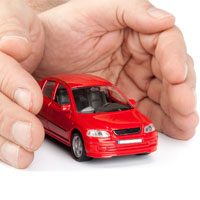
Did you come to the realization that you have an overpriced auto insurance policy? Trust us when we tell you there are many consumers feeling the pinch from expensive auto insurance. You have so many insurers to choose from, and although it’s a good thing to have a selection, having more car insurance companies makes it harder to find the lowest cost provider.
Choosing the best insurance company for you is quite easy. If you have a policy now or are looking for a new policy, you can follow these tips to shop for the lowest rates while maximizing coverage. Drivers only need to know the most effective way to buy auto insurance over the internet.
The most recommended method to compare car insurance company rates utilizes the fact most of the larger companies provide online access to compare their rates. To get started, all you need to do is give them rating details like how much you drive, types of safety features, how your vehicles are used, and driver ages. Your details is instantly submitted to many highly-rated insurers and they return cost estimates immediately.
To find the cheapest Mercedes-Benz G55 AMG insurance rates, click here and enter your coverage details.
Local car insurance agents
Many people prefer to buy from a local agent and doing that can be a smart decision Insurance agents are highly skilled in risk management and help you file claims. An additional benefit of comparing insurance prices online is the fact that drivers can get lower premium rates and still have an agent to talk to.
Upon completion of this form (opens in new window), your information is submitted to local insurance agents who want to provide quotes for your coverage. It makes it easy because there is no need to contact any insurance agencies since price quotes are sent immediately to you. In the event you want to compare prices from one company in particular, you can always go to their quote page and fill out the quote form the provide.
Finding the right insurer should include more criteria than just a low price. These questions are important to ask:
- Are claim adjusters local or do you have to take your car somewhere else?
- If you are a high risk driver, do they have special markets for your coverage?
- If you have an accident, will your rates go up?
- Is the coverage adequate for your vehicle?
- What is the financial rating for the quoted company?
- Do they regularly work with personal auto policies?
- Where would glass claims be handled?
Multiple types of auto insurance agents
If you want a reliable insurance agent, it can be helpful to understand the different agency structures and how they differ in how they can insure your vehicles. Agencies are either independent or captive. Either type can do a good job, but it’s important to know the subtle differences since it can impact which agent you choose.
Captive Agencies
Captive agents can only write with one company such as Farmers Insurance and State Farm. These agents are not able to provide other company’s prices so you might not find the best rates. Captives are well trained on what they offer which helps them sell insurance even at higher premiums.
Independent Auto Insurance Agencies
Agents that choose to be independent do not write with just one company and that allows them to write policies through many different auto insurance companies and find the cheapest rate. If they quote lower rates, your agent can switch companies and you won’t have to switch agencies.
If you need lower rates, you absolutely need to compare quotes from at least one independent agent to ensure the widest selection of prices.
To search for agents near you, click through to find a neighborhood auto insurance agency.
Auto insurance coverage information
Knowing the specifics of a auto insurance policy can help you determine which coverages you need and proper limits and deductibles. Policy terminology can be impossible to understand and even agents have difficulty translating policy wording. Below you’ll find typical coverage types available from auto insurance companies.
Collision insurance
This pays to fix your vehicle from damage resulting from a collision with an object or car. You first must pay a deductible then the remaining damage will be paid by your insurance company.
Collision coverage protects against things such as crashing into a ditch, sustaining damage from a pot hole, sideswiping another vehicle, scraping a guard rail and colliding with another moving vehicle. Collision coverage makes up a good portion of your premium, so consider dropping it from vehicles that are 8 years or older. It’s also possible to bump up the deductible to bring the cost down.
Liability car insurance
This coverage protects you from injuries or damage you cause to a person or their property by causing an accident. Liability coverage has three limits: bodily injury for each person, bodily injury for the entire accident, and a limit for property damage. Your policy might show liability limits of 25/50/25 which stand for $25,000 bodily injury coverage, a limit of $50,000 in injury protection per accident, and $25,000 of coverage for damaged propery.
Liability can pay for claims like legal defense fees, repair bills for other people’s vehicles and bail bonds. How much liability coverage do you need? That is up to you, but buy higher limits if possible.
Comprehensive auto coverage
This pays to fix your vehicle from damage that is not covered by collision coverage. You first have to pay a deductible then your comprehensive coverage will pay.
Comprehensive coverage pays for claims such as theft, a tree branch falling on your vehicle, falling objects and a broken windshield. The maximum amount you’ll receive from a claim is the actual cash value, so if the vehicle’s value is low it’s probably time to drop comprehensive insurance.
Medical payments and PIP coverage
Coverage for medical payments and/or PIP provide coverage for short-term medical expenses such as ambulance fees, doctor visits, hospital visits, nursing services and X-ray expenses. They are often used to fill the gap from your health insurance program or if you lack health insurance entirely. Coverage applies to not only the driver but also the vehicle occupants and also covers getting struck while a pedestrian. Personal Injury Protection is not universally available but can be used in place of medical payments coverage
UM/UIM (Uninsured/Underinsured Motorist) coverage
Uninsured or Underinsured Motorist coverage protects you and your vehicle from other drivers when they either have no liability insurance or not enough. Covered losses include injuries to you and your family and damage to your Mercedes-Benz G55 AMG.
Since a lot of drivers have only the minimum liability required by law, their limits can quickly be used up. This is the reason having UM/UIM coverage is a good idea.


